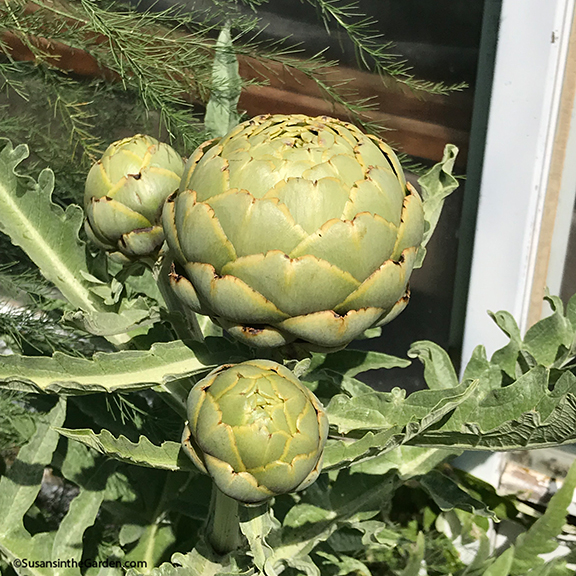How to Grow Artichokes

If you want to grow artichokes but you live in a cooler climate, you have to be sneaky. Learn how to make the plants develop heads in their first year of growth.
Latin Name: Cynara scolymus
Plant Family: Sunflower (Asteraceae)
Warm-season crop
Did You Know?
Artichokes are grown as perennials. This means they will return year after year in hardiness zones 7 to 11. Ordinarily, they start producing artichokes starting with their second year of life. In colder zones, it’s still possible to grow them but you have to be sneaky about it. This involves “vernalizing” both the seeds and, later, the seedlings prior to planting. This lets you trick them into thinking they’ve already been through a winter and should produce blooms. Find details of the process below. Another option is to cut back your artichoke plants at the end of the growing season and heavily mulch them to protect them from the winter cold. You might need to do a bit of experimentation to see what works best for your region.
Plant Seeds or Seedlings? Start seeds indoors or purchase seedlings at a nursery.
When: In zones 7 and above, start seeds indoors about 8 weeks before transplanting them into the garden. In cooler climates (zones 6 and below), begin the vernalization process of the seeds 3 months prior to the last anticipated frost date. First, expose the seeds to cold temperatures by placing them in an airtight container filled with lightly-moistened peat moss, and putting it in the refrigerator. After 2 weeks, plant the seeds indoors. The second step of vernalization involves moving the seedlings outdoors for 2 weeks prior to your planting-out date. This will expose them to colder temperatures, although don’t let them get frosted. Afterward, plant the seedlings in the garden. While it might sound crazy, this really works!
Days to Germination: 14 days
Depth to Sow: 1/4 inch. Orient the seeds with the pointed end facing downward.
Spacing: 3 feet apart in the garden.
Cultural Information:
Want to grow artichokes? First ask yourself if artichokes a perennial in your area? Take that into account when choosing a location so the plants won’t be disturbed in future years. Prepare the bed in the garden with bonemeal prior to planting. Once the artichoke seedlings have been transplanted into the garden, feed them with a nitrogen fertilizer such as diluted fish emulsion to get them off to a good start. Water them regularly throughout the season. You might also consider planting your artichokes within your landscape if you’re in a warmer zone. They look really cool!
Susan’s Picks: ‘Green Globe’, ‘Imperial Star’
Potential Insect Problems: Stink bugs, aphids
When to Harvest:
Pick buds when they reach full size, while the bracts (the small leaves on the buds) are still tight. Leave about 3 inches of stem attached. If you accidentally miss harvesting them before the flowers open, remember you can use them in stunning floral arrangements.
How to Cook:
Boil a kettle of lightly salted water, add artichokes. Reduce the heat and simmer them for 20 to 30 minutes. If you can pull out a center leaf, the artichoke is cooked.
My Videos on Growing Artichokes:
- Grow Artichokes
- Seed-Starting #3 (2021) (special seed treatments)
- Organic Insect Control: Flea Beetles, Hornworms, Slugs & Snails
Back to Vegetable Grow Guide Chart
Copyright: Susan Mulvihill, Susan’s in the Garden, SusansintheGarden.com.

